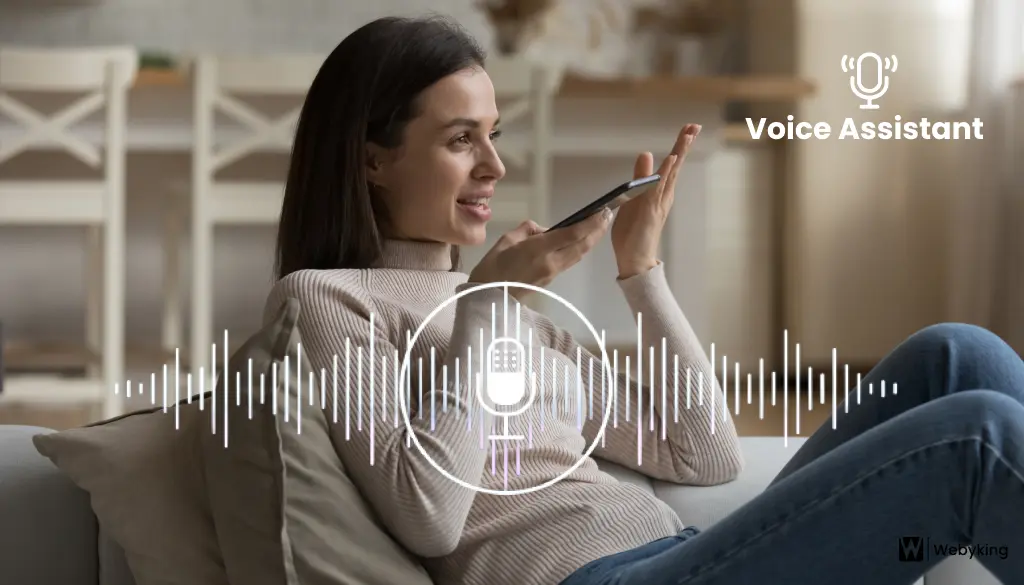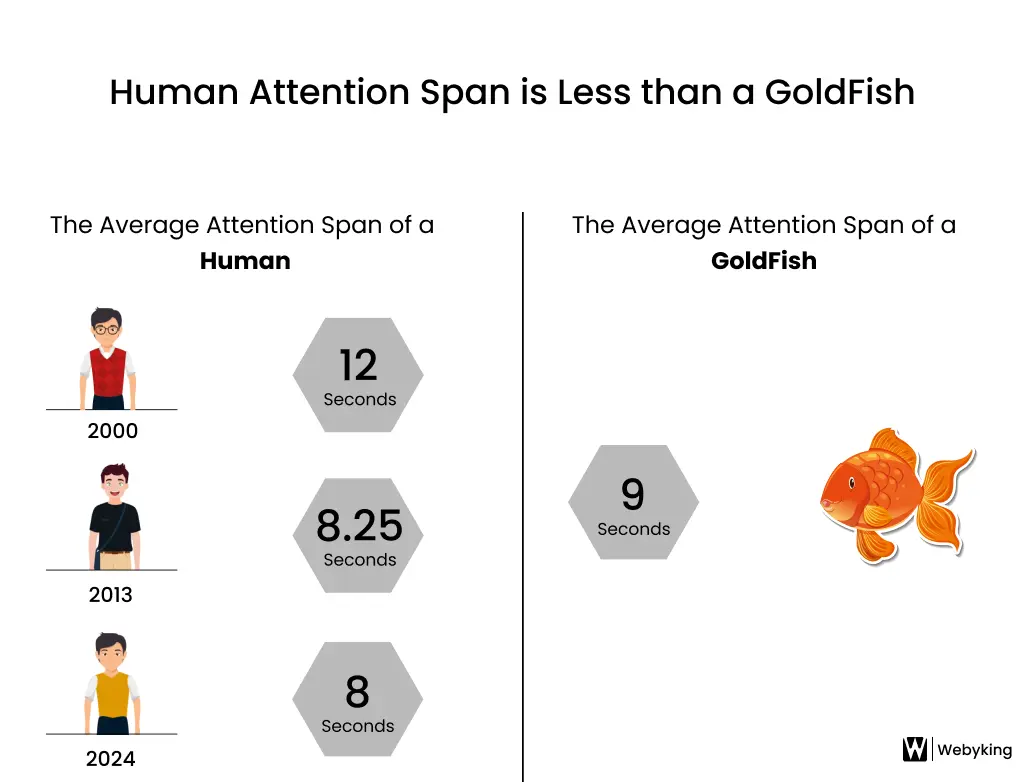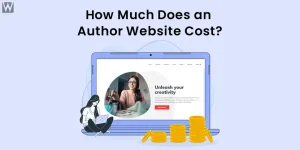Author Website Design Trends 2025

Tired of watching your static author website? Nowadays, readers need an interactive experience that goes beyond a simple online bio. Take a look at our previous blog for a closer look at the exciting features of author websites. In this post, we’ll discuss the latest trends in author website design, giving you insights on how to add these modern elements to your own site or communicate your ideas to a developer or agency. Get ready to enhance your online presence and make a lasting impression on your readers.
However, incorporating trends in any business is the most important step as time goes on. Take a look at one example of the company Nokia. Nokia’s decline in the mobile phone industry is a cautionary tale for successful companies.
Nokia was a dominant player in the past. But, it could not adjust to changing consumer demands or align its marketing with new trends, especially in smartphones. This caused a big drop in its market worth. Different departments’ lack of coordination made it worse. It led to a staggering 90% loss in market value in just six years.
Similarly, BlackBerry, HTC, Lenovo, and Micromax have faced challenges because they failed to adapt to changing consumer preferences and technological advancements.
It’s just an example of how adapting to the trends is important. The good news? You don’t have to be a tech whiz to create a website that converts. At WebyKing, our team is made up of professional author website designers who possess the experience, expertise, and knowledge of the latest trends. This guide will unveil the hottest author website design trends for 2025, helping you craft a platform that’s not just informative but truly vibrant and captivating. We’re talking about cutting-edge features, stunning visuals, and innovations powered by artificial intelligence (AI), all designed to make your website stand out and connect with readers on a deeper level.
Website Design Trends for an Author Website
Personalized User Experience
Imagine a website that recommends your next favorite book. It does this based on your reading habits. Or, it could have a fun quiz that unlocks exclusive content. This is the future of author websites, and it’s all powered by cutting-edge features like:
- AI-powered recommendations AI-powered recommendations would make your website like a personal book concierge. It would suggest titles your readers will devour based on their preferences.
- Interactive quizzes and polls: Interactive quizzes and polls spark conversation. They also gather valuable audience insights. They do this with features that go beyond the static bio page.
- Tailored content: Deliver blog posts, excerpts, and even sneak peeks based on a reader’s interests, keeping them coming back for more.
- Personalized emails: Write targeted email campaigns. These resonate with different reader segments and foster a deeper connection.
- Fan Clubs and User Accounts: Create a dedicated space for your most loyal followers to interact, share theories, and feel like part of a community.
- Adaptive design: It ensures your website flawlessly adapts to any device, from desktops to smartphones. This delivers a seamless experience for all readers.
By personalizing the user journey, you’re not just building a website – you’re crafting a loyalty program for your biggest fans. This is how you turn casual readers into enthusiastic supporters, ready to champion your work and spread the word. So, ditch the static website and embrace the age of personalization. It’s time to create an author platform that truly connects with your audience on a deeper level.
Voice User Interface (VUI)

Transform your author website using Voice User Interface (VUI) technology! Imagine your readers easily navigating your content. They are searching for their favorite books and accessing exclusive audio snippets. They do this all with the power of their voices.
With VUI, your website becomes more than just a platform; it’s an immersive experience where users can interact, engage, and explore your world in a whole new way. It transforms your website. It becomes a cutting-edge hub. It has seamless voice searches and personalized recommendations from virtual assistants. They make it accessible and user-centric.
Embrace the trend, elevate your online presence, and captivate your audience with the magic of VUI on your author website. Update your author website with Voice User Interface (VUI) technology, a popular trend that is quickly becoming more common and is predicted to be widely used soon.
Dark Mode

Dark mode is becoming popular for websites. It improves readability in low-light settings and reduces eye strain. It also has a sleek look that many users prefer. Adding a dark mode matches current author website design trends. It also caters to different user preferences. This improves the user experience and attracts a larger audience.
Several well-known websites, like YouTube, Twitter, and Reddit, provide Dark Mode options for users to switch between light and dark themes.
If you’re left in the dark about finding Dark Mode, don’t fret—just ask YouTube; they’ve got enough “light bulb” moments to brighten any search!
Microinteractions
We live in a fast digital world. People have short attention spans. There is tough competition for user engagement. So, designers and developers have turned to microinteractions as a popular tool. These small interactions add charm to websites. They make them easier to use and help guide users through the content.
Here are some microinteractions you can consider adding:- Hover Effects: Implement hover effects on links, buttons, and images to provide visual feedback and make interactive elements more engaging. For example, buttons could change color or grow slightly when hovered over.
- Animated Transitions: Use smooth animations to transition between pages or sections, creating a seamless browsing experience. This can include fade-ins, slide-ups, or subtle parallax effects.
- Interactive Book Previews: Allow users to preview your books by hovering over or clicking on book covers. This could trigger a popup with a brief synopsis, reviews, or a preview of the first chapter.
- Progress Indicators: Use them when users fill out forms or complete multi-step processes. These processes include signing up for a newsletter or making a purchase. This helps users track their progress and encourages them to continue.
- Social Media Sharing Buttons: Add social media sharing buttons to your blog posts or book pages. They animate when clicked, giving instant feedback and encouraging users to share your content.
- Feedback Forms: Include microinteractions in feedback forms. For example, highlight fields when they’re clicked on. Also, display a confirmation message when the form is submitted.
- Scrolling Animations: Implement scrolling animations to reveal content as users scroll down the page. This could involve fading in images or text blocks, adding depth to the browsing experience.
- Animated Navigation Menus: Use animated effects for navigation menus. They activate when users interact with the menus. For example, they expand dropdowns or highlight the current page.
- Tooltip Text: Provide tooltip text for icons or buttons that explain their functionality when users hover over them. This can help clarify the purpose of each element and improve usability.
- Loading Animations: Add small animations. They show that content is loading. They prevent users from feeling frustrated or impatient.
3D Elements
Adding 3D elements to your author website can provide an engaging experience for visitors. Don’t use static images. Use 3D renderings of your book covers or characters. These dynamic elements allow users to explore your books from different perspectives, making your website more visually appealing. You can also create 3D environments that reflect the settings of your stories, inviting visitors to explore key locations and learn more about your narrative world.
Using 3D animations to bring your book scenes to life and engage your audience is a popular trend. Also, having a 3D avatar of yourself on your website is becoming more popular. It can assist visitors, share info about your books, and chat with them. By using these 3D elements, you provide a unique and unforgettable experience for your audience. They will make your stories come alive in new and thrilling ways.
Neumorphism
Neumorphism (say “new-oh-morphism”) is a cool design trend that’s kind of like a visual trick. Imagine buttons or boxes on a website that look like they’re softly carved out of the background, almost 3D but with a clean, modern feel.
Adding Neumorphism to your author website can elevate its overall look and feel, providing users with a more engaging experience. By incorporating this design style into various elements like buttons, cards, navigation bars, and input fields, you can give them a sleek and tactile appearance. The subtle shadows and highlights add depth, making these elements visually appealing and interactive. Embracing Neumorphic design will give your website a contemporary and polished look, ensuring that it stands out and makes a lasting impact on your audience.
Accessibility Focus
Check out our blog for cost details and tips on budgeting for your online platform.
Sustainable Website Design
Sustainable website design is an approach to creating websites that minimize their environmental impact. It focuses on using resources efficiently and reducing the energy consumption required to run a website. Here’s the breakdown:
Sustainable website design is about more than looks. It focuses on eco-friendly practices throughout a website’s life. This means using techniques for faster loading times and less data usage. It also means using renewable energy sources for servers. And, it means optimizing code and image sizes to use less energy. Web accessibility will be beneficial to the environment, users (faster sites!), and your wallet (possibly lower hosting costs).
Video And Animation
Attention spans are dwindling, and text-heavy websites can struggle to grab visitors. Here’s where video and animation come in as lifesavers. They can captivate readers in seconds, making your website more engaging and interactive. Imagine a trailer for your latest novel or an animated intro to your book series! These elements not only tell your story in a fresh way but also leave a lasting impression, fostering a deeper connection with your audience. Plus, videos tend to increase dwell time, which search engines love and can boost your website’s ranking.
In short, video and animation are powerful tools to stand out from the crowd and create a website that’s truly magnetic for readers. This trend will continue to grow rapidly in the next few years, so stay ahead of the game!
Minimalist Design

You may be familiar with the importance of minimalist web design, so I will not tell you more about it. Just remember to keep your website design simple and focused on your content, like your books, author bio, upcoming events, and other important information. Avoid any unnecessary clutter or distractions that could divert attention from your message.
Take a look at minimalist website examples that successfully prioritize content while upholding a clean and focused design.
Fluid Builds
In modern web design, adaptability is key. Unlike fixed-width layouts that have a set width regardless of screen size, fluid layouts adapt dynamically to the size of the user’s screen or browser window. This means that the content stretches or contracts to fill the available space, providing a more flexible and responsive browsing experience.
No more zooming or scrolling sideways to see the content. Fluid layouts offer a smooth and effortless browsing experience for your visitors. As technology evolves and new devices emerge, your fluid website will adapt effortlessly, ensuring you stay ahead of the curve.
AI Features
By incorporating AI features into your author website, you can completely transform the user experience and streamline operations.
AI-powered recommendation systems: AI-powered recommendation systems can boost reader engagement. They do this by suggesting articles, blog posts, or books based on browsing history or preferences.
Chatbots: Chatbots can provide instant help to visitors. They offer personalized recommendations and help with book purchases. They also share information about upcoming events.
NLP Technology: NLP can analyze user feedback. It gives valuable insights into reader sentiment and preferences.
Voice Search: Voice Search can improve your website’s visibility and accessibility. It uses AI algorithms. This is especially true with the rise of voice-activated assistants like Siri and Alexa.
Content generation: AI generates content dynamically. It allows for personalized email newsletters, blog post summaries, and social media updates. They keep content relevant and engaging.
Audience segmentation: AI tools enable tailoring content and promotions to audiences. They do this by segmenting and targeting based on demographics, interests, and behavior. This customization boosts engagement and conversion rates.
Analytics Tool: An AI-powered analytics tool offers valuable insights. It shows how your website is doing and how users behave. It also covers conversion metrics. These insights help you make data-driven decisions. They will help you grow your audience and improve your author website.
Retro Aesthetics
Incorporating retro aesthetics into your author website can add a unique and memorable touch that reflects your personal style and resonates with your audience. Here’s how you can use retro elements effectively:
Color Palette: Choose a vibrant and bold color scheme reminiscent of the era you want to evoke. Experiment with colors like mustard yellow, teal, or pastel shades to create a vintage feel.
Typography: Use retro-inspired fonts for headings, titles, and other prominent text elements on your website. Fonts like Courier, Rockwell, or Baskerville can add a nostalgic vibe and enhance readability.
Graphics and Illustrations: Use retro-inspired graphics. They can be vintage book covers, typewriters, or old-fashioned pens. Use them to decorate your website. Pixel art or illustrations reminiscent of classic literature or vintage advertisements can also add charm.
Textures and Patterns: Add depth and character to your website by using textures like worn-out paper or distressed effects. Consider incorporating patterns like polka dots, stripes, or floral prints in the background or design elements.
Iconography: Use icons and symbols that reflect your author brand and resonate with your audience. Icons representing books, writing utensils, or literary motifs can be integrated into your website design.
Layout and composition: Create a layout inspired by vintage posters or book covers. They feature asymmetrical arrangements and collage-like compositions. Experiment with overlapping elements and retro-inspired borders to add visual interest.
You’re in the right place! Let our author website design services enhance your online presence.
Oversized Text
Oversized text is making waves in web design and is becoming a popular trend for several reasons. It’s bold and attention-grabbing, immediately grabbing user attention with its impactful presence. This trend isn’t just about looks. It makes text easier to read, especially on mobile devices. And it helps users with poor vision.
This trend also opens doors for creativity. It lets designers experiment with creative layouts. They can push the boundaries of traditional web design and add a modern, unique touch to websites.
Dynamic Content
Keep your website content fresh and engaging. Do this by regularly updating it with new releases, blog posts, author interviews, and reader interactions. Consider integrating social media feeds or user-generated content to add dynamic elements to your site.
According to research, our attention span has markedly decreased in just 15 years. In 2000, it was 12 seconds. Now, 15 years later, it’s shrunk significantly to 8.25 seconds.
Human attention span is less than that of a goldfish. While a goldfish’s attention span is 9 seconds, humans have just 8.25. Moreover, an average user will take only half a second to form an initial opinion of a website.
At that time, the user will decide what the site is about and if the content is interesting.

At that time, the user will decide what the site is about and if the content is interesting.
Conclusion
As an author, your website is an extension of your creativity. By following these trends and staying true to your unique voice, you can build a platform. It will reflect your writing and resonate with your audience. Remember, your website is a journey, so don’t be afraid to experiment and have fun with the design process.
So, If you’re ready to create an author website that’s cutting-edge, tech-forward, and budget-friendly for 2025, the experts at WebyKing can help! Schedule a free consultation call with our team of professionals today!
FAQs
What are the top author website design trends in 2025?
In 2025, top trends include interactive storytelling elements, minimalist layouts, AI-driven personalization, accessibility-first design, and dark mode support for better readability and user experience.
Why is AI integration important for author websites in 2025?
AI helps personalize content, suggest related books or blogs, and offer chatbot support—creating a more engaging and intelligent user journey for visitors.
How can authors make their websites mobile-friendly in 2025?
Authors should use responsive design, mobile-first layouts, optimized loading times, and easy-to-tap buttons to ensure seamless experiences on all screen sizes.
What design elements help authors build trust with readers online?
Professional photography, social proof (like reviews or testimonials), consistent branding, and secure website certificates (HTTPS) all help build credibility and trust.
Do author websites need accessibility features in 2025?
Yes, accessibility is crucial. Features like alt text, high-contrast colors, screen reader support, and keyboard navigation ensure inclusivity and comply with modern web standards.

Ravi Makhija, the visionary Founder and CEO of WebyKing, is a seasoned digital marketing strategist and web technology expert with over a decade of experience. Under his leadership, WebyKing has evolved into a premier full service web and marketing agency, delivering innovative solutions that drive online success. Ravi’s deep understanding of the digital landscape combined with his passion for cutting-edge technologies empowers him to consistently exceed client expectations and deliver results that matter.












